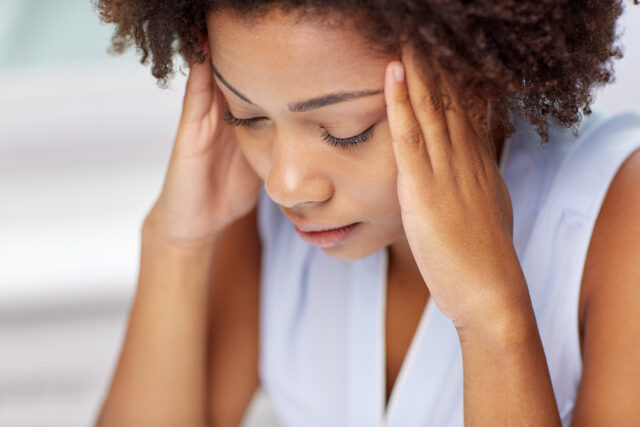Tips to Help Manage Anxiety
Anxiety is a common non-motor symptom of Parkinson’s disease, affecting approximately two out of five people with Parkinson’s. Though a noticeable increase in anxiety most likely occurred with your first acknowledgement of Parkinson’s motor-symptoms such as stiffness, slowness of movements and tremors, as well as with your official diagnosis, anxiety can actually be one of the first signs of Parkinson’s. Research suggests that anxiety might not be a psychological response to the illness, but rather the result of chemical changes within the brain. For some who have managed anxiety such as Generalized Anxiety Disorder, Anxiety Attacks, Social Avoidance and Obsessive-Compulsive Disorder prior to a diagnosis of Parkinson’s, you may in fact have been experiencing the first symptoms of the disease. It is often not connected to Parkinson’s until the motor symptoms of Parkinson’s are present. For those who experience anxiety after their diagnosis, it is important to discuss this with your physician to ensure effective interventions are added to your treatment plan.
Types of Anxiety
Approximately 40% of people with Parkinson’s will experience anxiety in their lifetime. The following briefly outlines how anxiety may appear in people with Parkinson’s.
Generalized Anxiety Disorder (GAD): Persistent and excessive worry about a number of different things, an overall feeling of nervousness that seems out of proportion to what is actually happening. Physical symptoms include nausea, heart palpitations, trouble breathing (perhaps leading to hyperventilation), swallowing, sweating and increased tremors.
Panic Attacks/Panic Disorder: Sudden onset of intense physical and emotional distress, you may feel you cannot breathe, or are having a heart attack. The distress can be so concerning that you feel you are having a medical emergency. The sensations often subside quickly, within a few minutes, but can last up to one hour, especially during “off” times. Left untreated, panic can lead to agoraphobia and an inability to leave the house, at least on your own.
Social Anxiety Disorder: A sense of fear or embarrassment, which could be due to Parkinson’s symptoms, that can leave you avoiding everyday social situations for fear of being scrutinized and judged negatively by others.
Obsessive-Compulsive Disorder (OCD): Unwanted thoughts, ideas or sensations (obsessions), for example fear of germs, that makes you feel driven to do something repetitively (compulsions). In the case of germs, you may repeatedly wash your hands, or avoid crowded places. The compulsions are put in place to alleviate the anxiety produced by the obsessions. Repetitive behaviours, such as hand washing, checking on things or cleaning, can reach a point where the need to continually act on the compulsions significantly interferes with a person’s daily activities and social interactions.
Tools for Managing Anxiety
Anxiety can lead to avoidance and can impact your quality life and overall well-being. To help you manage, there are a number of tools you can include in your day.
Mindfulness: “Mindfulness means paying attention in a particular way; on purpose, in the present moment, and non-judgmentally.” — Jon Kabat-Zinn. When you are anxious, your mind is generally focused on the past, future, or worst-case scenarios. Taking a moment or two to focus on the present can help calm the mind. Mindfulness activities can help you do this. There are a variety of mindfulness exercises, including yoga and meditation. Here are two brief exercises that can get you started.
3 Senses
Simply notice what you are experiencing right now through three senses – sound, sight, touch. Take a few slow breaths and ask yourself:
- What are three things I can hear? (clock on the wall, car going by, music in the next room, my breath)
- What are three things I can see? (this table, that sign, that person walking by)
- What are three things I can feel? (the chair under me, the floor under my feet, my phone in my pocket)
Belly Breathing
- Sit in a comfortable position.
- Put one hand on your belly just below your ribs and the other hand on your chest.
- Take a deep breath in through your nose, and let your belly push your hand out.
- Breathe out through pursed lips as if you were whistling.
- Do five times … go at your own pace!
Exercise
Not only is exercise an effective means of symptom management in Parkinson’s, but it also has a calming effect due to the changes in your brain chemistry that occur during exercise. Your body will release dopamine and endorphins (naturally occurring morphine), both feel-good chemicals.
Nutrition
Eating a balanced diet, staying hydrated and limiting alcohol and caffeine are at the foundation of supporting a diet that will help reduce feelings of anxiety. Complex carbohydrates such as those found in whole grains (unprocessed oats, brown rice etc.), legumes, vegetables (broccoli, green beans, etc.) and fruit help to maintain even blood sugar levels, a process that creates feelings of calm. Sources of magnesium such as nuts, seeds and leafy greens and foods rich in zinc such as cashews and egg yolks have also been linked to lower levels of anxiety.
Talk About It
Talking helps. Reach out to a trusted friend, your physician or a counsellor/therapist for support. Talking about your situation and experiences and sharing negative emotions with someone you trust can be healing. Studies have shown that “talking about it” reduces stress, strengthens your immune system and reduces physical and emotional distress.
Medication
For many, medications are a last resort to managing anxiety. However, if your anxiety is affecting your quality of life, speaking to your physician about options may be a next step to consider.
Resources
Education
Michael J. Fox Foundation – Podcast: https://www.michaeljfox.org/podcast/podcast-moving-mood-changes-parkinsons-look-depression-and-anxiety-pd-webinar
Parkinson’s Foundation – Podcast: https://www.parkinson.org/podcast/Episode-84-Managing-Anxiety
Parkinson’s Foundation: https://www.parkinson.org/Understanding-Parkinsons/Symptoms/Non-Movement-Symptoms/Anxiety
Parkinson Society Southwestern Ontario: https://psso.ca/?s=anxiety
Harvard Health: https://www.health.harvard.edu/blog/nutritional-strategies-to-ease-anxiety-201604139441
Mindfulness
Yoga Routine for Parkinson’s: https://www.youtube.com/watch?v=cc-g3BT9IQA
Belly Breathing for Anxiety: https://www.youtube.com/watch?v=U_P-I-WCvDQ
Tai Chi for Parkinson’s Disease: https://www.youtube.com/watch?v=ygmQCH1XuEY
